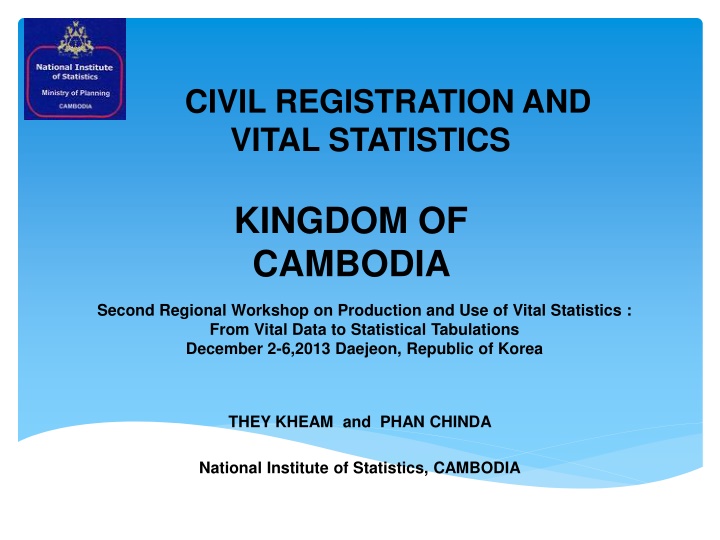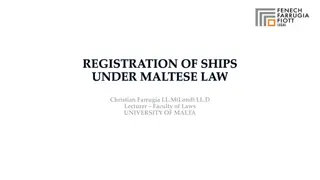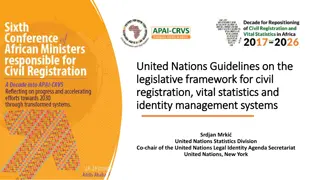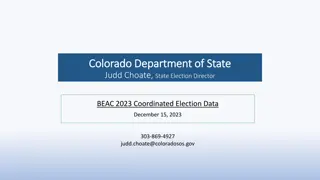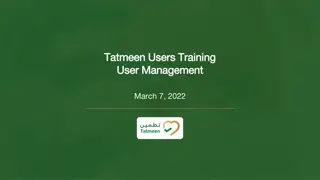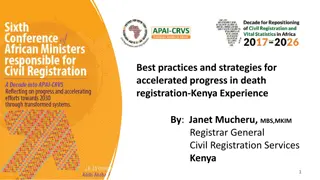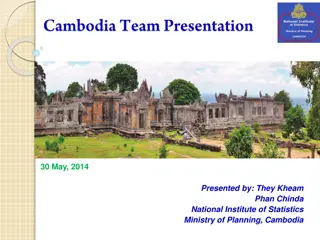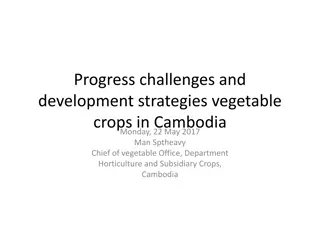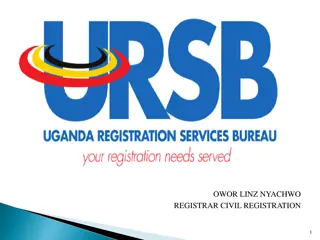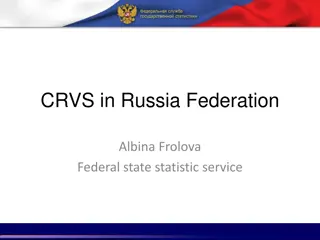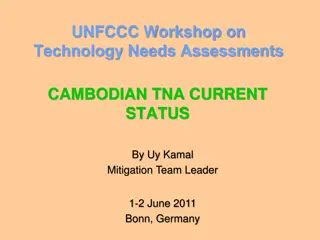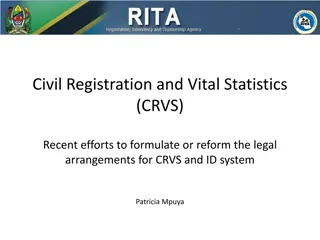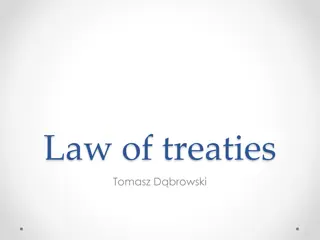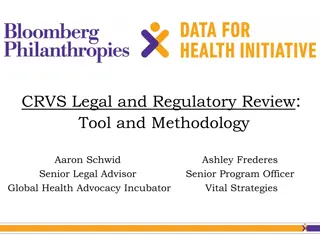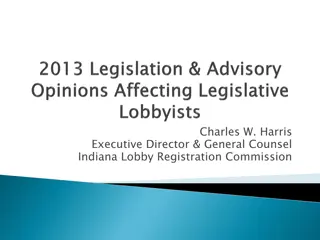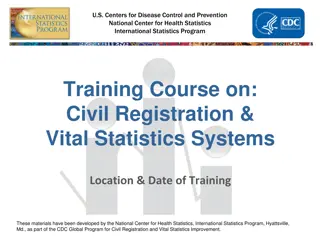Legal Framework for Civil Registration in Cambodia
Before 2002, Cambodia lacked a specific legal framework for civil registration. In December 2000, the Ministry of Interior enforced a sub-decree to establish a civil registration system. Challenges and recent developments in Cambodia's civil registration and vital statistics system are discussed in detail, highlighting the significance of a clear and systematic registration process for the population.
Download Presentation

Please find below an Image/Link to download the presentation.
The content on the website is provided AS IS for your information and personal use only. It may not be sold, licensed, or shared on other websites without obtaining consent from the author.If you encounter any issues during the download, it is possible that the publisher has removed the file from their server.
You are allowed to download the files provided on this website for personal or commercial use, subject to the condition that they are used lawfully. All files are the property of their respective owners.
The content on the website is provided AS IS for your information and personal use only. It may not be sold, licensed, or shared on other websites without obtaining consent from the author.
E N D
Presentation Transcript
CIVIL REGISTRATION AND VITAL STATISTICS KINGDOM OF CAMBODIA Second Regional Workshop on Production and Use of Vital Statistics : From Vital Data to Statistical Tabulations December 2-6,2013 Daejeon, Republic of Korea THEY KHEAM and PHAN CHINDA National Institute of Statistics, CAMBODIA
Topics Covered National legal framework for civil registration and vital statistics system Registration infrastructure and resources Organization and functioning of the CR and VSs system Review of forms used for birth and death registration Coverage and completeness of registration Data storage and transmission Compilation and Dissemination of Vital Statistics Challenges 2
National legal framework for civil registration and vital statistics system Before 2002 , Implementation of CR in Cambodia is not available the specific legal framework , but in December 2000, by the sub decree 103, the Ministry of Interior, RGC, created the legal framework for civil registration system in the country. The sub decree was enforced on 01st August 2002, and the objective of the government is to bring its entire population under the new and uniform civil registration system by August 2005. Background Challenges
National legal framework for civil registration and vital statistics system Recently, Cambodia has been a new civil code, but this code have not been implemented yet. However the new CR system have suitable legal base to implement. Those legal bases are : Law on nationality Law on marriage, family Law on immigration Law on statistic ( * ) Sub decree No.103 on civil registration Sub decree No.29 on asking adopted children to abroad Sub decree No.183 on marriage between C & F Legal framework for CR implementation Challenges
National legal framework for civil registration and vital statistics system CR system in Cambodia is base on simple principle, easy, clear and economic. CR documents are issued by mandated officials at commune/sangkat level. The CR system allows the state to know the exact number of its population, to protect its citizens and to do socio-economic development planning. (*) The responsibility of recording birth, marriage and death has been given to chief of commune for official assigned in this purpose. Current CR system Challenges
National legal framework for civil registration and vital statistics system Applying for registration in the book of registration is the obligation of every Khmer citizen (art.3) Birth within 30 days and death within 15 days.(art.17 & 35) Current Father, mother or guardian shall apply for a child s birth certificate( art.25) CR system Family members of deceased shall apply for a death certificate(art.40) failure to register birth or death, paying 1000 R and 4000 R.(art.25&40) Challenges
National legal framework for civil registration and vital statistics system The registrants are recorded in two identical books. After closing the books, one was sent to first instance for legal used and other was sent to district for safe keeping. Current CR system The books are to be opened on first Jan. of the current year and closed on the last day of the year. Challenges
Registration infrastructure and resources Center : Ministry of Interior, Department General of Local Administration, Department of General Administration, Office of Statistic & Civil Registration. Province : Provincial Administration, Office of Statistic & Civil Registration. District : District Administration, Office of General Administration. Commune : Commune office. Registration infrastructure Challenges
Registration infrastructure and resources Previous Administration Management Structure Four-tiered government structures: Central Government Central Government Registration infrastructure 23 Provinces and 1 Municipalities ext Rkug Provinces Municipalities 171 Districts and 14 Khans Rsuk XuM Communes xN Districts Khan 1,510 Communes and 111 Sangkats (1,621 C/Ss) sg at; Sangkat Challenges
Registration infrastructure and resources Current administration management structure Four-tiered government structures: Central Government Registration infrastructure 01 23 Capital City Provinces 08 26 159 Districts Khan Municipalities 96 Communes Sangkat Sangkat Sangkat 1397 Challenges 128
Registration infrastructure and resources MOI shall have duty to standardize CR books throughout the country. MOI shall have duty to train CR official. Registration resources MOI ensure to provide sufficient amount of CR books and certificate. Printing CR books & certificates and training on CR for all CR officials shall be charged from the state budget. The country currently have 1621 c/s local civil registrars/clerks Challenges
Organization and functioning of the CR and VSS system The new and uniform of CR system has started from 1st August 2002 till 30 September 2004, There are less than 5% of the birth certificates issued. In June 2004, Some articles of sub decree on CR was amended. From 1st October 2004 to 31st December 2006, RGC has started the national mobile civil registration Campaign. During campaign the birth and death certificates are delivered free of charge. Challenges
Organization and functioning of the CR and VSS system The registration has been done by handwriting. MoI conducted training on how to register to mobile team members which is supported by ADB. ADB provides incentive for mobile team member $5/100 records registered. MoI conducted a public information campaign directed to population on importance and benefits of birth, marriage and documents. death registration Challenges
Organization and functioning of the CR and VSS system Plan international Cambodia and UNICEF assist MOI on public awareness campaigns. 24 UNV deployed to assist the provincial officials. More than 13.000 mobile team members reach to village to register Over 12 millions people has obtained the birth certificates that equal to over 90% of birth certificates issued. Started computerizing CR data [2002-2006] in 2009 supported by ADB. Over 1.8 millions of birth records have been entered in the database system. Challenges
Review forms used for birth and death registration Review of Birth Recode Form Challenges
Review forms used for birth and death registration Review of Death Recode Form Challenges
Review forms used for birth and death registration 1- child information Family and given name, sex, nationality, name in Latin, Child number, .date of birth, place of birth 2-Parents information 3-Reporter information Birth record form was Included 1-Decesed person information 2-Parents information 3- Reporter information Death record form was Included Challenges
Coverage and Completeness of Registration Some people living in the remote area have ignored in civil registration, however the mobile team members have reached to their home. C/S official s capacity implementation is limited . People s understanding on the importance of civil registration is limited. People s migration from one place to other In Year 2009 only 60.4% ( CDB source ) in civil registration Challenges
Data storage and transmission 1 One copy of all birth and death records from 2002 to 2010 have been keeping in the district hall and another copy have been keeping in the center of ministry of interior and some provincial hall. 2 Only 1.8 millions birth records among 13 millions were included into computerized system. 3 86% of birth records are still not yet transfer into computerized system. Challenges
Compilationand Dissemination of Vital Statistics CDHS 2000,2005, 2010 2014 Compilation Dissemination - CBR - DUSC - CDR - NIS Website CIPS 2004, 2013 - MMR - Cam Info - TFR Data available with Hard and Soft - Others Censuses 1998, 2008 Nothing Vital Statistics from CRS , MOI Product only legal document (Birth , Death and Married certificates)
Challenges 1 The CR system have been met the primary purpose but not yet the secondary purpose .(A1.2) 2 The definition of live birth , fetal death or stillbirth have not been included in the birth registration law.(A1.7) 3- There is not a law or regulation requiring hospitals and health facilities to report births and deaths.(A1.11) 4 The funds for CR & VSS are not clear in the law, so these funds are not adequate to ensure the proper functioning of the system. Esp., for VSS.(A2.3) 5 The current budget for the vital statistics unit is inadequate. Challenges
Challenges 6 The current communication mechanisms between the civil registration authority and others involved in the collection and production of vital statistics are weak. (B1.5) 7 The cause of death is included on the registration form, but the reality of implementation is unclear.(B1.4) 8 The additional items collected on the birth and death registration forms are nationality, legitimacy or illegitimacy, place of birth of deceased, prior occupation of deceased, ID card No.(B2.3) 9 The main obstacles to improving civil registration are lack of knowledge about the need to register births and deaths, financial barriers and illiteracy.(B3.23) 10 The local registration offices record and store the collected information on births and deaths by registry books. So lack of funds for data collection , compilation , analysis and these data have not been transferred to VSS and dissemination yet. Challenges
Thank You For Your attention
